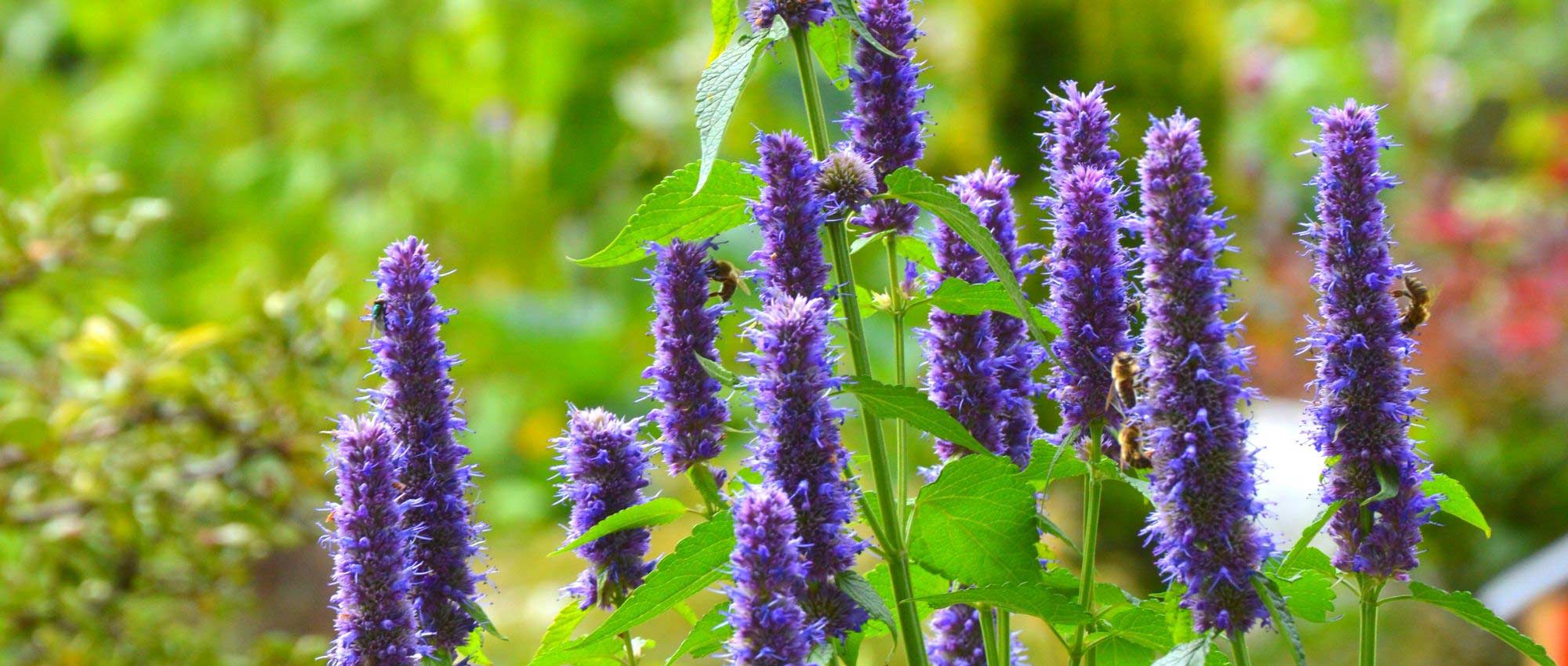
Agastache: 7 successful companion planting ideas!
Our ideas and inspirations
Summary
Agastaches are superb aromatic perennials that flower in summer. They then bear flower spikes, often blue or mauve, but can also be pink, red, orange, yellow or white, depending on the variety. Their flowering is very melliferous, attracting pollinating insects. Some have very decorative foliage, such as Agastache ‘Golden Jubilee’. In the garden, plant in full sun, in cool but very well-drained soil. They easily find a place in wild, naturalistic-style gardens, but also fit very well into English-style mixed borders, dry gardens or medicinal plant gardens. Their flowering allows creation of a wide diversity of scenes, from the most natural to the most colourful and exuberant!
Discover which plants to pair them with to create harmonious borders!
In a naturalistic garden
With their delicate spike inflorescences, Agastache plants are perfect for incorporating into a naturalistic garden with a wild, country-style look. Even better, their highly melliferous flowering attracts pollinators. Use them to create a garden favourable to biodiversity that also has the advantage of requiring very little maintenance. I recommend Agastache ‘Blue Fortune’, which bears particularly tall, blue-mauve flower spikes. To accompany it, choose other plants with a very light, airy habit, such as Gauras, Verbena hastata, Cosmos, Knautias, salvias, Asters… Also enjoy superb flowering of purple echinaceas! With their very fine leaves, grasses are an essential element in this garden style for the wild touch they bring: choose, for example, Stipa or Pennisetum. They will give a real feeling of a wildflower meadow!
You can create a superb naturalistic scene by combining delicate flowerings in shades of white, blue and mauve. Include blue flowers of the Nepeta ‘Six Hill Giant’ and Agastache ‘Black Adder’, paired with the flattened inflorescences of Achillea and the small, rounded white heads of Santolina ‘Edward Bowles’. Fine foliage of Stipa tenuifolia and small purple inflorescences of Allium sphaerocephalon will add further lightness to this naturalistic scene!
For more planting ideas, consult our advice sheet: “10 emblematic perennial plants for naturalistic gardens”
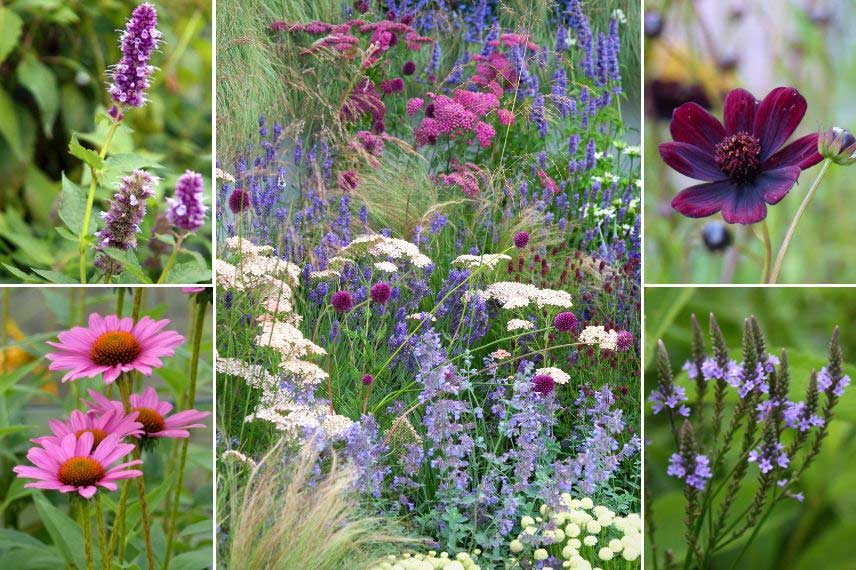
Agastache foeniculum ‘Blue Fortune’ (photo David J. Stang) / Echinacea purpurea ‘The King’ / Scene with Santolina ‘Edward Bowles’, Stipa tenuifolia, Allium sphaerocaphalon, Nepeta ‘Six Hill Giant’, Achillea millefolium : type species and ‘Wonderfull Wampee’, Agastache rugosa ‘Black Adder’ (photo Liz Eve – Copyright GWI) / Cosmos atrosanguineus / Verbena hastata (photo Cody Hough)
You may also read
Agastache: to plant, to grow and to maintainIn a cottage garden
Cottage garden style appeared in 16th-century England. It really showcases old stone houses and timber-framed houses. It is a garden that appears untidy, thanks to an abundance of flowers and foliage, yet it is at the same time very romantic and poetic. Soft, pastel shades are favoured: blue, white, mauve, pink, light orange… For Agastaches, I recommend the variety ‘Blue Boa’. At the back of the border, plant old roses and other bushes such as hydrangeas, Weigelia, Deutzia, spireas… In front of them, plant a great diversity of flowers: hardy geraniums, agapanthus, Nepeta, Veronicastrum virginicum, foxgloves, delphiniums, Oriental poppies, campanulas, cornflowers, Salvia nemorosa… Don’t hesitate to plant densely to create a cluttered, luxuriant effect! This feeling will be reinforced by plants with generous foliage, such as those of the ferns or hostas. You can also mix aromatic and medicinal plants into borders, as well as vegetables, because beyond its aesthetic, the cottage garden also has a utilitarian purpose. You can install vintage-style decorative elements, for example by displaying old gardening tools. Prefer natural or aged materials: stone, wood, wrought iron… they will give your garden lots of charm!
For more ideas, take inspiration from this cottage garden ambience !
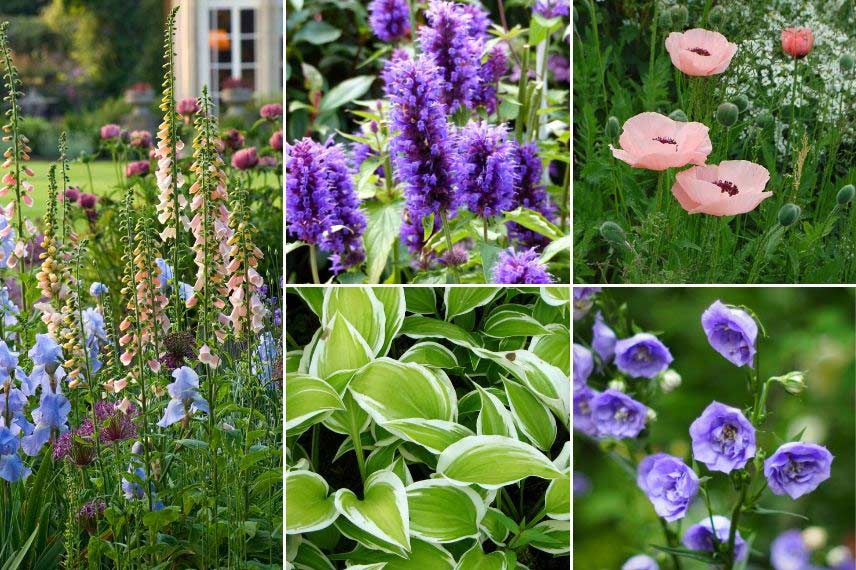
Scene with Iris ‘Jane Phillips’, Digitalis ‘Suttons Apricot’ and Papaver orientale ‘Patty’s Plum’ (photo MAP – The Old Rectory – Haselbech – Northamptonshire) / Agastache ‘Blue Boa’ / Papaver orientale ‘Karine Crambe’ / Hosta ‘Emily Dickinson’ / Campanula persicifolia ‘La Belle’ (photo M’s photography)
Discover other Agastache
View All →Available in 1 sizes
Available in 2 sizes
Available in 3 sizes
Available in 1 sizes
Available in 1 sizes
Available in 1 sizes
Available in 1 sizes
Available in 1 sizes
Available in 2 sizes
Available in 1 sizes
In a garden of aromatic and medicinal plants
Agastache has aromatic foliage, with an aniseed scent in Agastache foeniculum, or a minty scent in Agastache rugosa, and its flowers and leaves can be used in cooking, for example added to salads. Thus, it combines easily with other aromatic and medicinal plants. You can create a space inspired by physic gardens or gardens of simples, laying out a succession of small regular beds, with paths allowing access. Define the beds with small borders in wood, wattle, or with small box hedges. Include for example Agastache rugosa ‘Alabaster’, which offers white spikes and very fragrant foliage. Gather alongside it useful, aromatic and medicinal plants: for example thyme, mint, savory, parsley, basil, sage, hyssop, chamomile… You will have a wealth of plants to make herbal teas, natural remedies, or to flavour dishes! You can include edible flowers: nasturtiums, cornflowers, borage, daylilies… and other purely decorative flowers such as sweet peas or love-in-a-mist. Also feel free to include some old and unusual vegetables: orache, lovage, chard, cardoon…
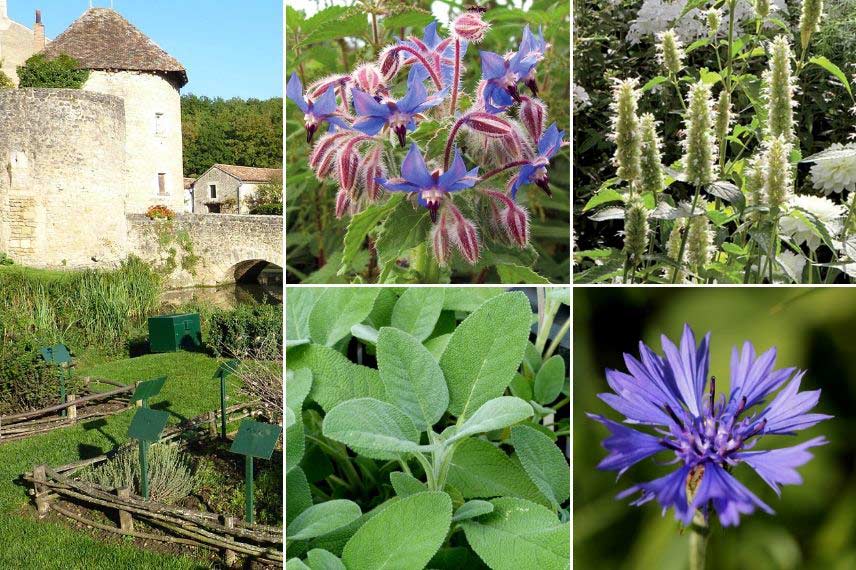
Medieval garden / borage / Agastache rugosa ‘Alabaster’ / Salvia officinalis ‘Grower’s Friend’ / Centaurea cyanus (photo Björn S.)
In a colourful mixed border
Create a typical English-style garden border by combining a great diversity of colourful perennials! I recommend installing this border leaning against a hedge or low stone wall. When choosing plants, try to vary shapes and colours. Choose, for example, Agastache ‘Kudos Gold’, which bears superb orange-gold flowers. At front of border, plant lower-growing plants such as hardy geraniums or heucheras. At back, favour large perennials with a light, airy habit that add volume, such as Perovskia atriplicifolia. Combine them with Heleniums, Echinacea purpurea, Cosmos, Heliopsis, Aster novi-belgii, Phlox paniculata… Also consider Dahlias, which come in a great diversity of shapes and shades! Agastache pairs particularly well with monarda, which bears curious, tousled flowers, usually red or pink. In all cases, favour plants with bright, lively flowering. To lighten the border a little, don’t hesitate to incorporate some grasses.
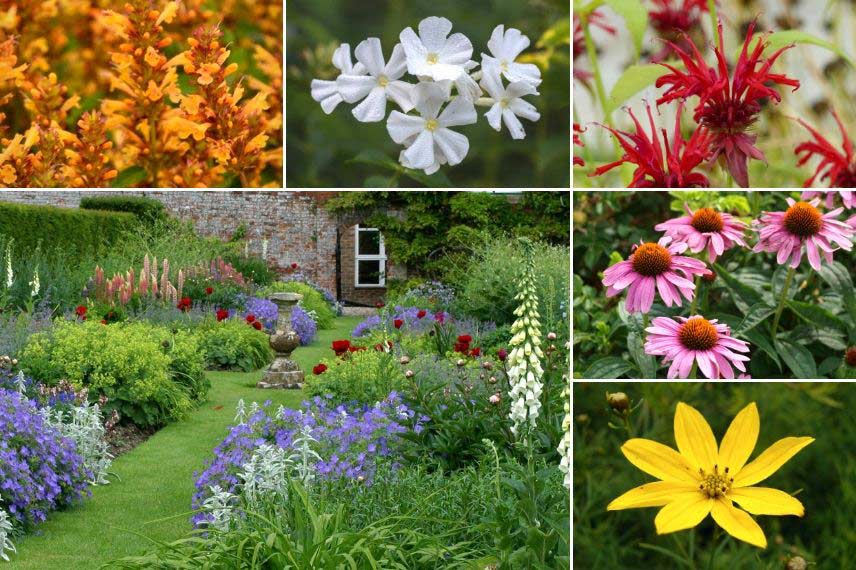
Agastache ‘Kudos Gold’ (photo Guido) / Phlox paniculata ‘Fujiyama’ (photo Dominicus Johannes Bergsma) / Monarda ‘Jacob Cline’ / Perennial borders (photo Stuart Logan) / Echinacea purpurea (photo F.D. Richards) / Coreopsis verticillata (photo Chrumps)
In a dry, stony garden
As Agastache prefers well-drained soil and copes quite well with drought, you can use it to create a dry garden, with a predominantly mineral character. Choose a sunny spot and improve drainage if necessary by adding coarse sand, gravel and stones. You can also create slopes or raised beds to enhance drainage further. Then include plants that do not need watering! Regarding agastaches, I have a particular preference for species Agastache rupestris. To accompany it, plant Sedums, Phlomis fruticosa, shrubby potentillas, Echinops ritro, helianthemums… Euphorbias also have their place in this type of garden! Also consider Stipa pennata, exceptional for its long, feathery floral spikes that undulate in the wind! You can also include plants with silvery foliage: Senecio cineraria, Stachys byzantina, Helichrysum… We also appreciate rose campion, Lychnis coronaria, for its beautiful silvery leaves and intense magenta flowering! You will obtain an ecological, water-efficient garden, as these plants do without watering and fertiliser. They are particularly hardy. Once established, you can spread a mineral mulch over the soil, such as gravel.
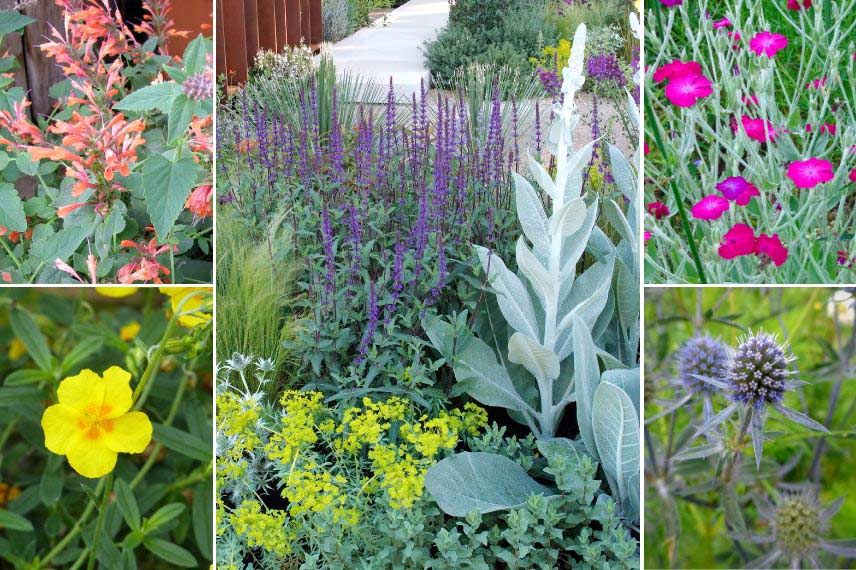
Agastache rupestris / Helianthemum ‘Ben Fhada’ / Scene with Verbascum ‘Polarsommer’, Salvia nemorosa ‘Caradonna’ and Euphorbia myrsinites (photo Nathalie Pasquel – MAP) / Lychnis coronaria / Eryngium planum (photo AfroBrazilian)
To play with colour contrasts!
Create an impressive flowerbed using complementary colours. These are hues opposite on the colour wheel, creating lots of depth and contrast. They reinforce each other. This is the case, for example, with blue and orange. You can include an agastache such as ‘Black Adder’ alongside other blue-flowering plants: nepeta, agapanthus, Delphinium, aconite, campanulate, salvias… Among them, add orange-flowering plants: marigolds, dahlias, gladioli, Eschscholzia californica, Echinacea ‘Big Kahuna’, Asclepias tuberosa… These opposing colours revitalise the garden, preventing a dull, monotonous flowerbed!
You can also play with contrasts by pairing the light green–gold foliage of Agastache ‘Golden Jubilee’ with the dark leaves of Heuchera ‘Obsidian’ and Ophiopogon planiscapus ‘Nigrescens’. This will really highlight Agastache’s leaves!
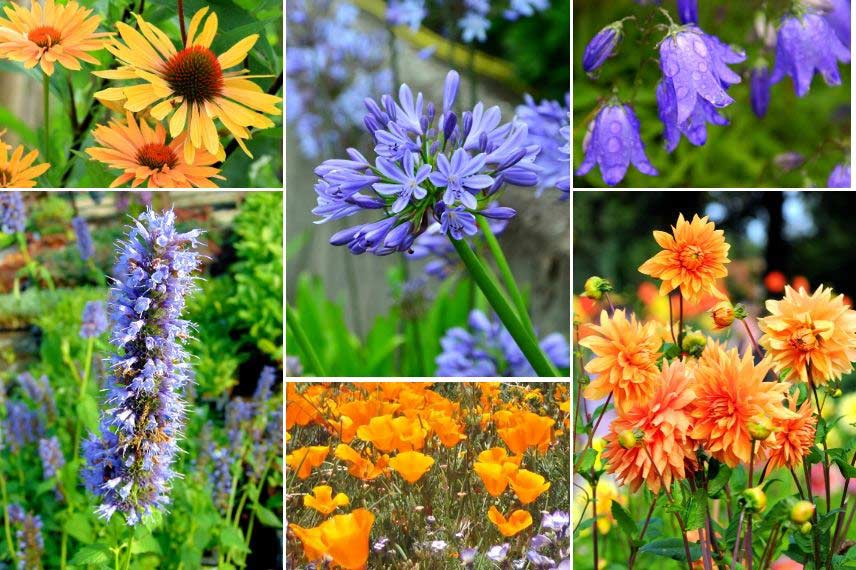
Echinacea ‘Big Kahuna’ (photo Adobe Stock) / Agapanthus / Campanula rotundifolia (photo Randi Hausken) / Agastache foeniculum ‘Black Adder’ / Eschscholzia ‘Sun Shades’ (photo Saintrain) / Dahlia ‘Motto’ (photo Adobe Stock)
In a romantic garden
Agastaches also fit very well in romantic gardens. Choose Agastache ‘Summer Love’, which bears beautiful pink inflorescences (though varieties with mauve flowers also suit). Plant it with Gypsophila, Achillea with white or pink flowers, hollyhock Alcea rosea ‘Simplex’ and Phlox paniculata. Also enjoy beautiful double soft pink flowers of Dahlia ‘Seduction’, and the very light flowering of Pimpinella major ‘Rosea’. Bring a light, airy effect with the very fine white spikes of Persicaria amplexicaulis ‘Alba’. At front of border, plant lower plants, hardy geraniums. You can add climbing plants such as roses or clematis and train them up an arbour or pergola! Finally, I strongly recommend including plants with silvery foliage, such as Artemisia stelleriana ‘Silver Brocade’.
For more ideas, take inspiration from this romantic garden ambience !
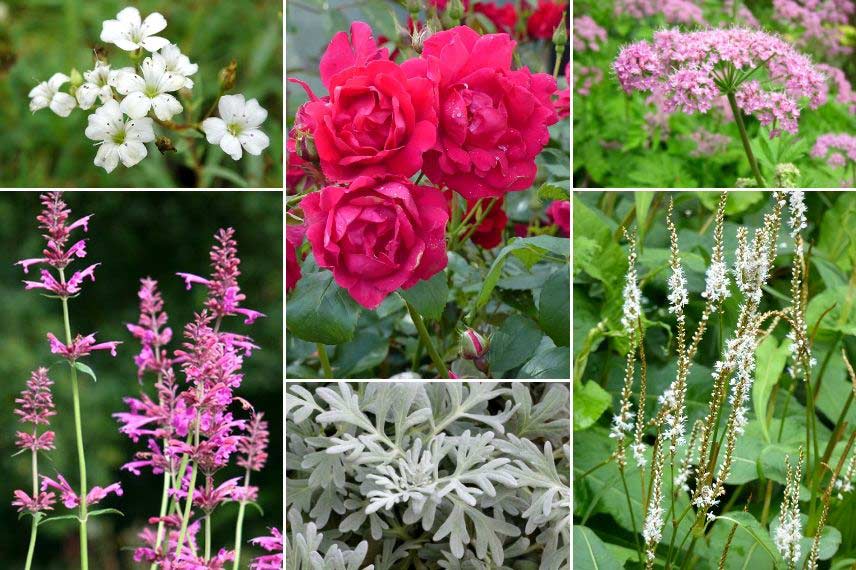
Gypsophila repens ‘Alba’ / Climbing rose ‘Paul’s Scarlet Climber’ / Pimpinella major ‘Rosea’ / Agastache ‘Summer Love’ / Artemisia stelleriana ‘Silver Brocade’ / Persicaria amplexicaulis ‘Alba’
- Subscribe!
- Contents
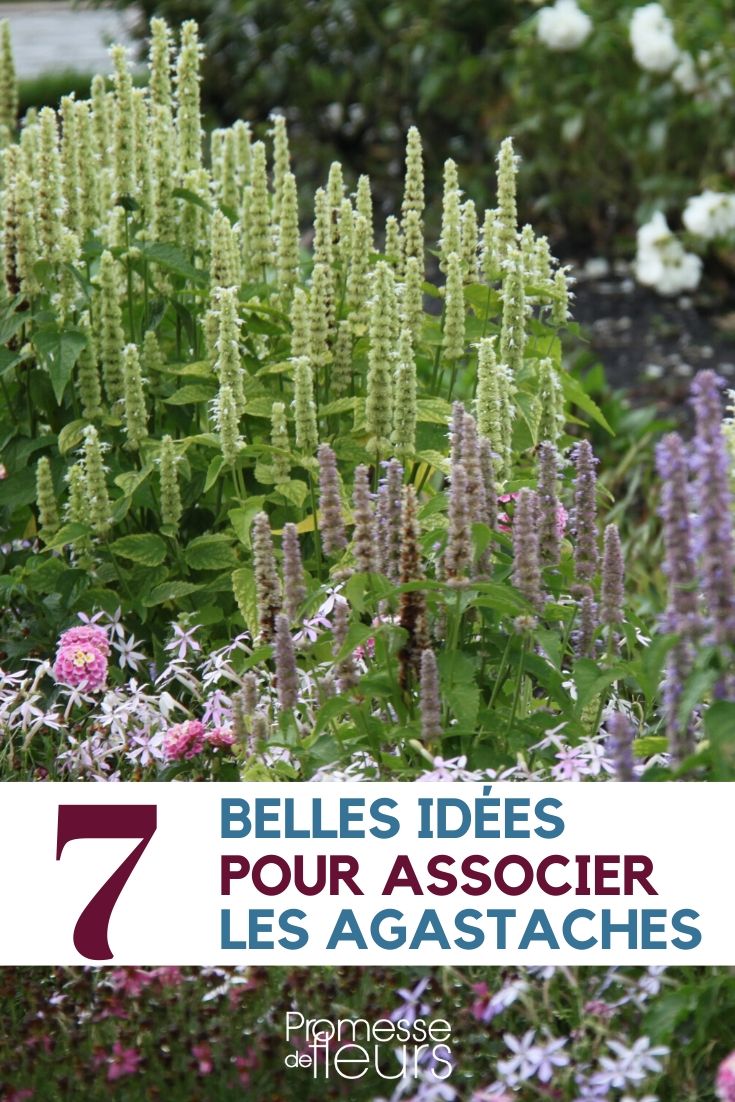
































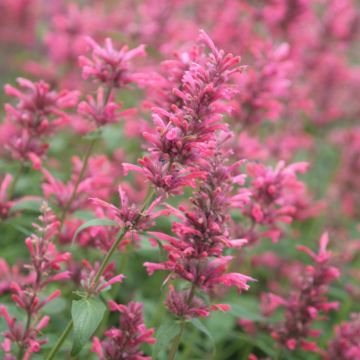
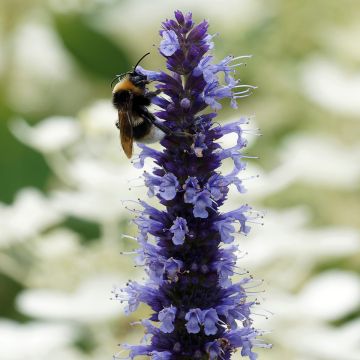
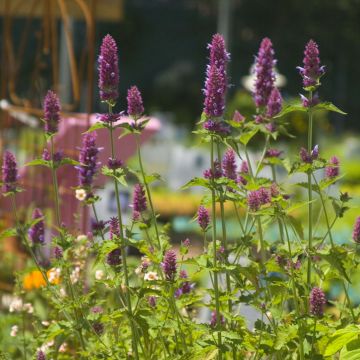
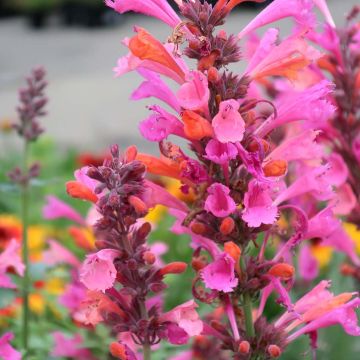
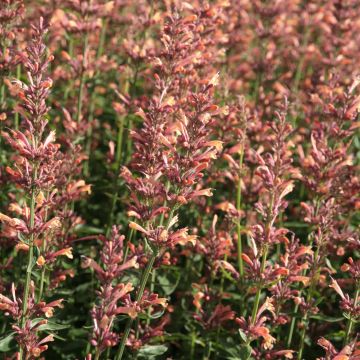
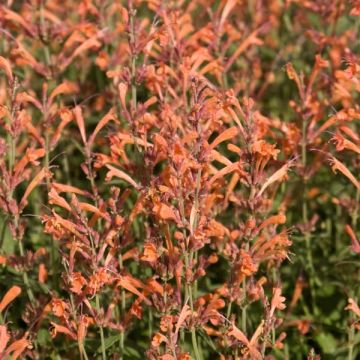
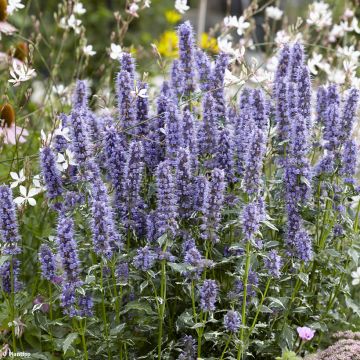


Feedbacks